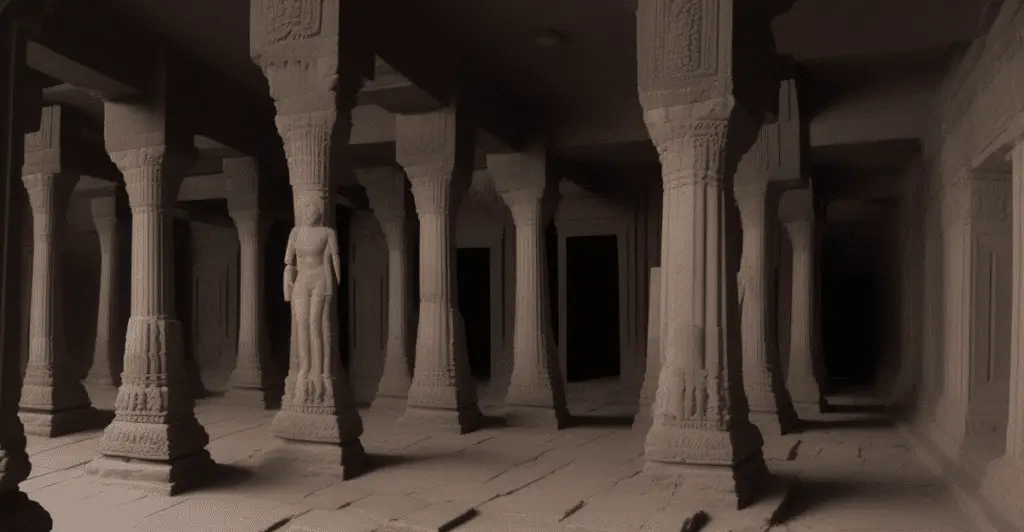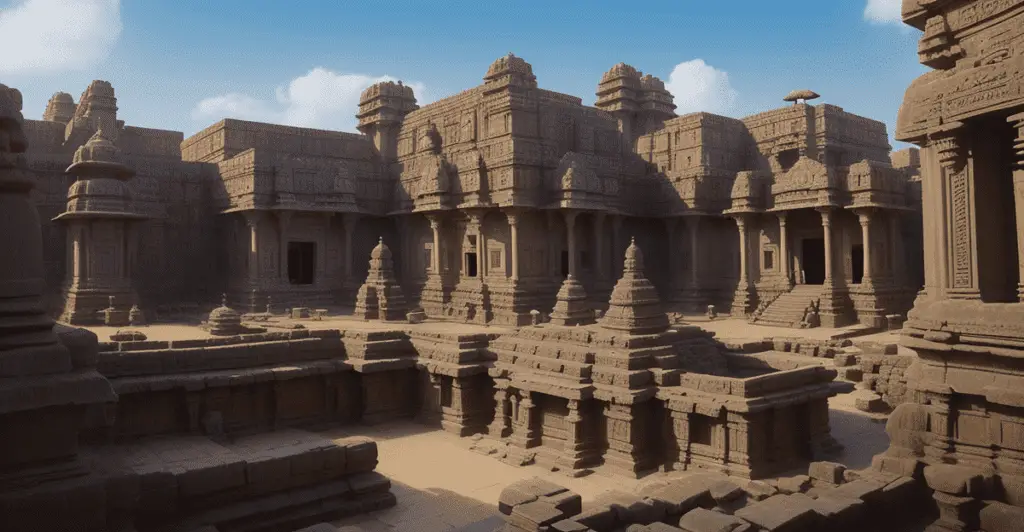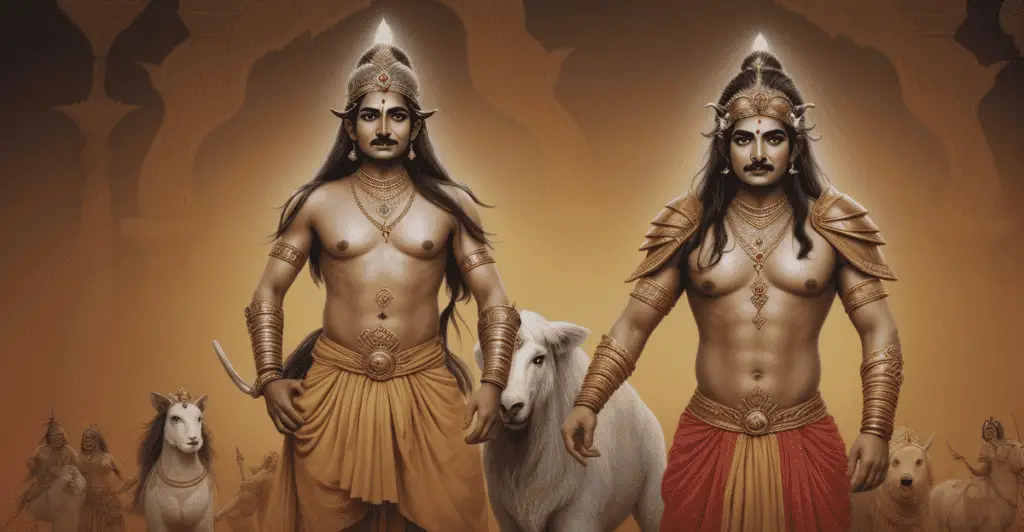Introduction
The Kailasa Temple, located in the Ellora Caves in Maharashtra, stands as a hallmark of exquisite Indian architecture. Built in the 8th Century AD by the Rashtrakuta king, Krishna I, the temple is a testament to the cultural and spiritual richness of India. The word Kailasa is another name for the abode of Lord Shiva (Mount Kailash). Therefore, it’s no surprise that this stunning temple is dedicated to Shiva, a significant deity in Hinduism. As a UNESCO World Heritage site, it plays a pivotal role in India’s cultural heritage and as a major attraction for tourists from around the globe.
What makes Kailasa Temple stand out among other remarkable cave temples is its unusual construction process. Instead of the traditional method of adding blocks to build it, the temple was hewn from a single rock, from the top downwards, in a procedure known as ‘Vertical Excavation.’ This monolithic structure is not only an architectural wonder but serves as a testament to the unique history, resilience, religion, and artistic talents of a bygone era.

The Location of Kailasa Temple
If India is the body, Maharashtra, located in the western peninsular region of the country, forms its heart. Home to the magnificent Kailasa Temple—the temple rests in the northern part of Maharashtra, specifically in the city of Aurangabad. The temple is part of the larger Ellora Caves complex, which is a collection of religious monuments hewn right out of the solid rock of the Charanandri hills.
For travellers planning to visit this architectural marvel, Aurangabad, a historical city in itself, is the nearest urban centre, approximately 30km away from Ellora. The city has a well-connected railway station and airport, facilitating travel from different parts of the country.
The Historical Context of Kailasa Temple
The temple was built in the 8th century under the patronage of King Krishna I. During this period, Maharashtra was ruled by the Rashtrakuta dynasty—a dynasty known for its contributions to Indian art and architecture. The period from 756 AD to 773 AD was significant for the construction of the Kailasa Temple. The rulers of the Rashtrakuta dynasty were staunch Shiva devotees, and the influence is clearly seen in the carvings and statues in the temple.
The temple is designed in the likeness of Mount Kailash, revered in Hindu scriptures as the abode of Lord Shiva. The depiction of the mountain-peak shaped temple is a homage to this belief. It’s interesting to note how the legends and beliefs of people from the 8th century are solidified in this enormous structure that still stands strong today.
The Architecture of Kailasa Temple
More than just a tribute to religious beliefs, the Kailasa Temple exemplifies the peak of rock-cut architecture. The temple is entirely monolithic. From the grand entrance to the deepest corners of the temple, each part of the temple was carved out of a single massive rock.
A closer look at the carvings showcases graceful deities, mythical creatures, intricate decorative patterns—an extensive gallery of a profound artistic imagination. The temple complex includes not just the main sanctum but also several subsidiary shrines, halls, gateways, and bridges. The main temple is a multi-storeyed building with a large pillared hall, a Shikhara (mountain peak- a tower over the inner sanctum), and an image of Shiva in his three-headed form.
The temple complex’s overall layout further solidifies the belief of Mount Kailash being the heavenly abode of Shiva. One can’t help but marvel at the grandeur and the level of detail each stone carving presents, providing a glimpse into the cultural richness of ancient India.

Exploring the Ellora Caves and the Kailasa Temple Complex
The Kailasa Temple is just one of the 34 cave temples and monasteries collectively known as the Ellora Caves. This vast complex incorporates not only Hindu temples but also Buddhist and Jain caves, a testament to the religious harmony and cultural diversity of India.
In this grand complex, while exploring Kailasa Temple, visitors will witness a breath-taking array of sculptures narrating Hindu myths and legends, such as epic tales from the Ramayana and Mahabharata. Among the most remarkable are the large panels depicting the ten incarnations of Lord Vishnu and the marriage of Shiva and Parvati. These finely-detailed carvings provide a glimpse into the ancient craft of Indian artisans, whose work has endured for more than a thousand years.
At the heart of the temple complex, housed in a courtyard, the Nandi Pavilion is another site of interest. It’s an awe-inspiring example of the monolithic rock-cut architecture and features a colossal statue of Nandi, the bull who serves as a mount (vahana) to Shiva.
The Unesco Recognition of Kailasa Temple and Ellora Caves
Owing to its significant cultural, historical, and architectural value, the Ellora Caves Complex including the Kailasa Temple, has been recognized as a UNESCO World Heritage Site since 1983. These exceptional rock-cut temples offer an unrivalled understanding of the spiritual and artistic traditions of ancient India and have become a cardinal part of the international archaeological heritage.
Today, UNESCO protection guarantees the preservation of these profound symbols of the human spirit, ensuring they weather the passage of time and continue to inspire generations. The UNESCO recognition also lends a hand in boosting Maharashtra’s tourism, making it a focal point on the world heritage map.
However, it’s worth noting that the site is more than just another name on the UNESCO list; it’s a historical treasure that tells the story of a civilization, making it an essential visit for any global traveller.

Kailasa Temple in Modern Times
Stepping into the Kailasa Temple complex is like stepping back in time, where each wall whispers a thousand ancient tales. Despite its historical roots, the temple remains relevant and frequented by many enthusiasts and worshippers today.
For modern Hindus, the Kailasa Temple holds significant religious value. It’s not uncommon to see devotees offering prayers and performing rituals, particularly on festive occasions related to Lord Shiva.
Visitors are urged to treat the site with respect and refrain from any activities that might harm the ancient structures. Also, as with any religious site, there is a certain code of conduct to adhere to, such as dressing modestly and keeping the surroundings clean.
While deployment of conservation measures to protect this ancient wonder, and prevent further deterioration due to natural or human-led factors is ongoing, it is worth noting that the temple had a brush with danger under the reign of Mughal emperor Aurangzeb who intended to demolish the temple complex. Thankfully, the plan was abandoned due to the sheer complexity and enormity of the task. Yet, it resulted in some damage to the temple’s sculptures that can be spotted till date.
A Closer Look at the Kailasa Temple
The Kailasa Temple invites you towards an exploration of not just historic India but also the skill, devotion, and passion of ancient Indian craftsmen. With each step deeper into the temple, you find yourself marvelling at the level of intricate details and sophistication that have stood the test of time.
The interior of the temple is as impressive as its exterior, if not more. Step into the primary sanctum and you will find yourself enveloped by serene ambiance, accompanied by the sturdy pillars supporting the multi-storey structure.
The walls of the temple are bedecked with relief sculptures, each narrating a tale from the great Indian Epics of Ramayana and Mahabharata. Giants, elephants, mythological creatures appear lifelike in stone, a testament to the skillful hands that painstakingly carved them out.
Another sight to behold is the sixteen-foot tall, three-headed sculpture of Shiva. Each of the heads represents one form of Shiva: as a creator, preserver, and destroyer. This unusual representation of Shiva brilliantly showcases the creative interpretation of Indian mythology in art, making it a must-see for visitors.
As one navigates through the temple, the sight of the Nandi Pavilion with the Nandi Bull statue standing tall at the entrance demands admiration. This colossal statue is said to guard the gates of the main sanctum and is the largest monolithic Nandi in India.
Conclusion
The magnificent Kailasa Temple is more than just a relic of the past—it offers a timeless lesson in artistic brilliance, religious tolerance, and cultural integrity. The spectacle of this incredible architectural marvel, meant to be savored slowly and quietly, leaves one with an indelible sense of wonder and respect for our predecessors’ visionary accomplishments.
Whether you’re seeking a spiritual escape, an architectural marvel, or merely a glimpse into a world that existed over a thousand years ago—the Kailasa Temple is sure to captivate your senses and your imagination. Share the experience with friends, family, or solo—the grandeur of the temple is bound to elevate you.
So, as you pen down your travel bucket list, make sure to put the Kailasa Temple right at the top. And remember, behind every stone, every carving at the Kailasa Temple, there’s a story waiting just for you.


